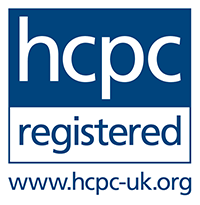The landscape of mental health assessments has undergone a significant transformation with the widespread adoption of remote working. The intersection of technology and mental health services has given rise to remote assessments, providing both opportunities and challenges.
The adoption of remote assessments has accelerated in recent years, initially due to the COVID-19 Pandemic, and thereafter as a driver to improving the Employee satisfaction and work-life balance. Telehealth and virtual platforms have become everyday essential tools in delivering mental health services, allowing professionals to conduct assessments from a distance.
Direct and Indirect Challenges
Limited Non-Verbal Cues
Virtual assessments may lack the richness of in-person interactions, making it challenging for mental health professionals to pick up on certain non-verbal cues, having the possibility to limit the depth of understanding of a client’s emotional state (Luxton, D. D. et. al., 2014)
As practitioners, by joining our efforts in bridging this gap, with our training and assistance, you will benefit from a clear guide with best practices in achieving & even exceeding face-to-face
Technological Barriers
Not everyone has equal access to the necessary technology for remote assessments. Issues such as poor internet connectivity, lack of suitable devices, or limited digital literacy can create barriers for some individuals, exacerbating existing health inequalities (Shapiro, J., & Bauer, S., 2015)
Security and Privacy
The use of virtual platforms raises concerns about the security and privacy of sensitive mental health information. Ensuring the confidentiality of remote assessments is crucial to maintaining trust between clients and mental health professionals (Hilty, D. M. et.al., 2024).

Expected and Unexpected Positives
Convenience and Flexibility
Remote assessments offer convenience for clients who may face challenges in attending in-person appointments. And this option also allows the scheduling of such assessments to be further streamlined, as clients no-longer require a full day or a half day of holiday, where they can now accommodate their assessment during the workday, at lunch or by only requesting one hour off (Connolly, S. L., et. al., 2020)
Such convenience is even more beneficial for individuals with mobility issues, transportation constraints, or for individuals who live in areas with limited mental health resources (Hilty, D. M., et. al., 2013)

Reduced Stigma
Remote assessments offer increased confidence to many customers, allowing them to openly discuss their mental health challenges. By completing the assessments from the privacy of their own space, we are reducing the stigma associated with seeking mental health support & we are increasing the likelihood of empowering people to see the necessary help (Mohr, D. C. et. al., 2010).
Accessibility and Reach
Remote assessments break down geographical barriers, providing access to mental health services for individuals in remote or underserved areas. This increased accessibility has the potential to address mental health disparities and ensure that a broader population can receive timely assessments (Mucic, D., & Hilty, D. M., 2013)
And more, the convenience of remote assessments allows us to address the shortage of practitioners by using the resources of the best English practitioners relocated outside of the UK, allowing all our customers to have access to the most desired practitioners whilst also significantly reducing waiting periods.
Final Remarks
The integration of remote working into mental health assessments has brought about both advantages and challenges. And while the remote assessment structure can benefit from potential improvements, it also allows customers to have immediate access to the necessary help.
The ongoing evolution of remote mental health assessments requires continued research and adaptation to ensure that the positive aspects are maximised, and the potential drawbacks are mitigated.
As we continuously strive to maintain our leading industry advantage, we welcome all practitioners to join our ever-growing team and benefit from our most updated resources and from our continued support in conducting remote assessments.
And with a pull of over 1000 practitioners and 100% success rate, we are the most suitable solution for all the customers requiring Educational or Expert Witness assessments

Reference List:
Connolly, S. L., Miller, C. J., Lindsay, J. A., & Bauer, M. S. (2020). A systematic review of providers’ attitudes toward telemental health via videoconferencing. Clinical Psychology: Science and Practice, 27(2), e12311.
Hilty, D. M., Sunderji, N., Suo, S., Chan, S., & McCarron, R. M. (2017). Telepsychiatry and other technologies for integrated care: Evidence base, best practice models, and competencies. Academic Psychiatry, 41(2), 279–284.
Hilty, D. M., Ferrer, D. C., Parish, M. B., Johnston, B., Callahan, E. J., & Yellowlees, P. M. (2013). The effectiveness of telemental health: a 2013 review. Telemedicine and e-Health, 19(6), 444–454.
Luxton, D. D., Pruitt, L. D., & Osenbach, J. E. (2014). Best practices for remote psychological assessment via telehealth technologies. Professional Psychology: Research and Practice, 45(1), 27–35.
Mohr, D. C., Ho, J., Duffecy, J., Baron, K. G., Lehman, K. A., Jin, L., & Reifler, D. (2010). Perceived barriers to psychological treatments and their relationship to depression. Journal of Clinical Psychology, 66(4), 394–409.
Mucic, D., & Hilty, D. M. (2013). The effectiveness of telepsychiatry: A systematic review. Journal of Telemedicine and Telecare, 19(6), 318–324.
Shapiro, J., & Bauer, S. (2015). Mobile mental health apps: Review of evidence of efficacy. JMIR Mental Health, 2(1), e22.




